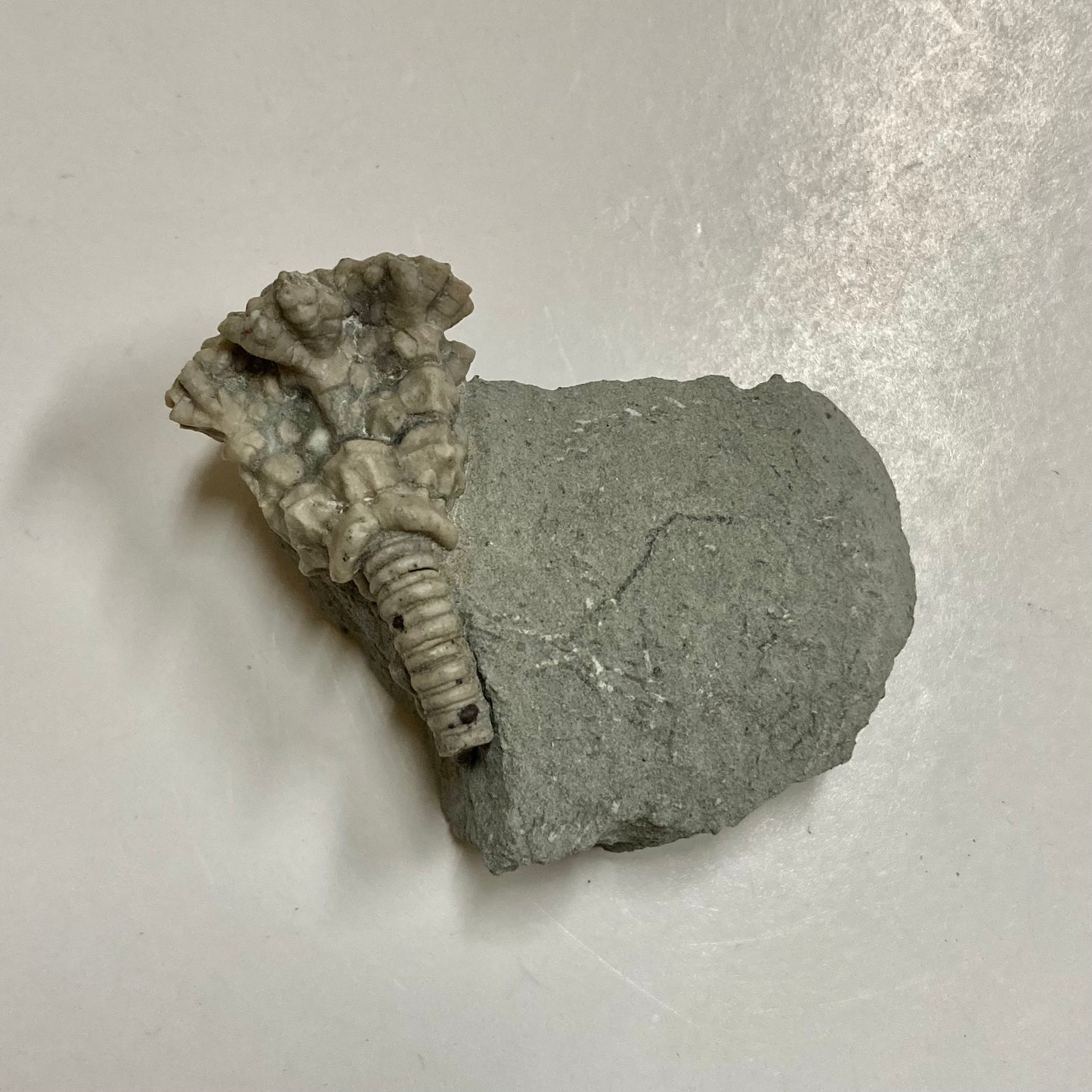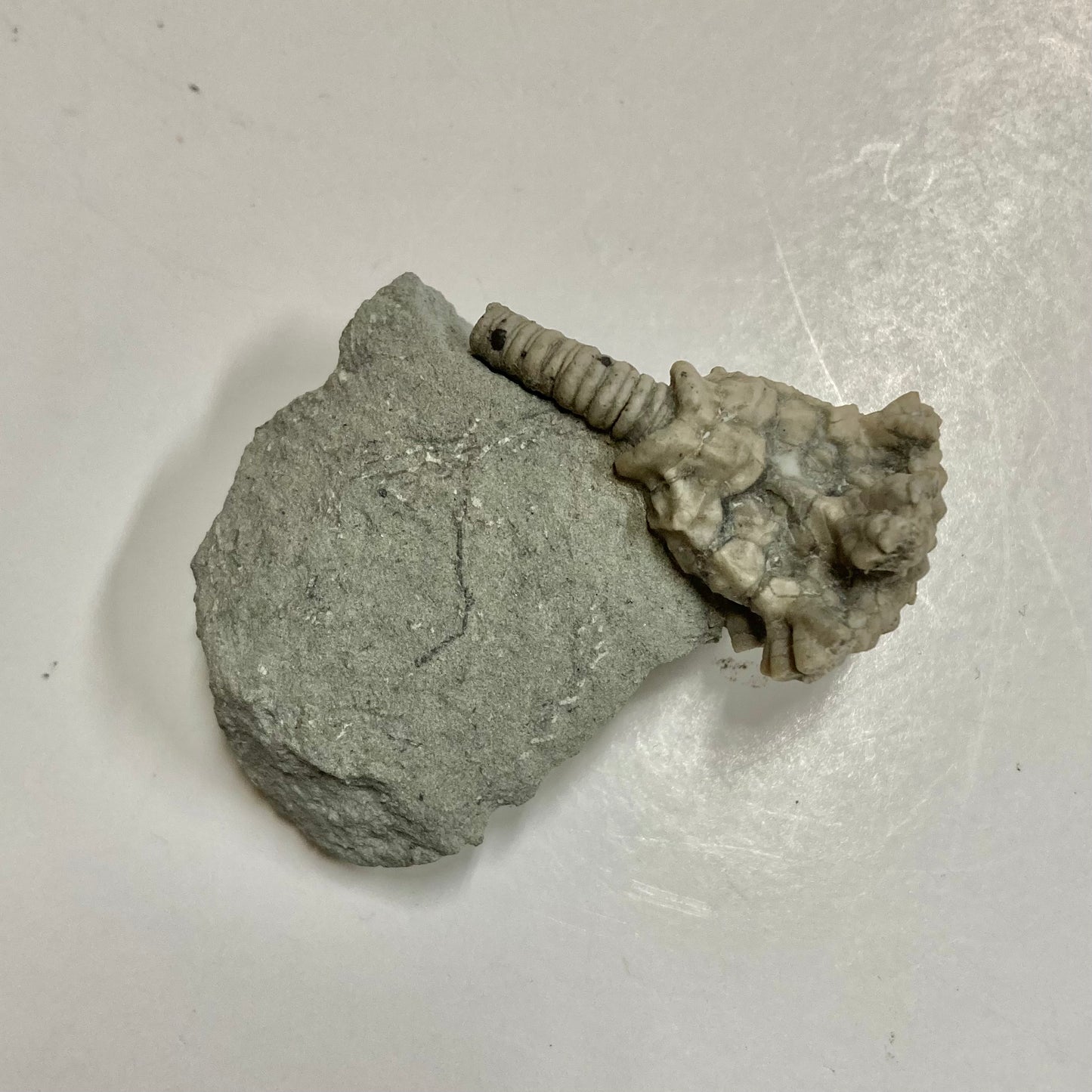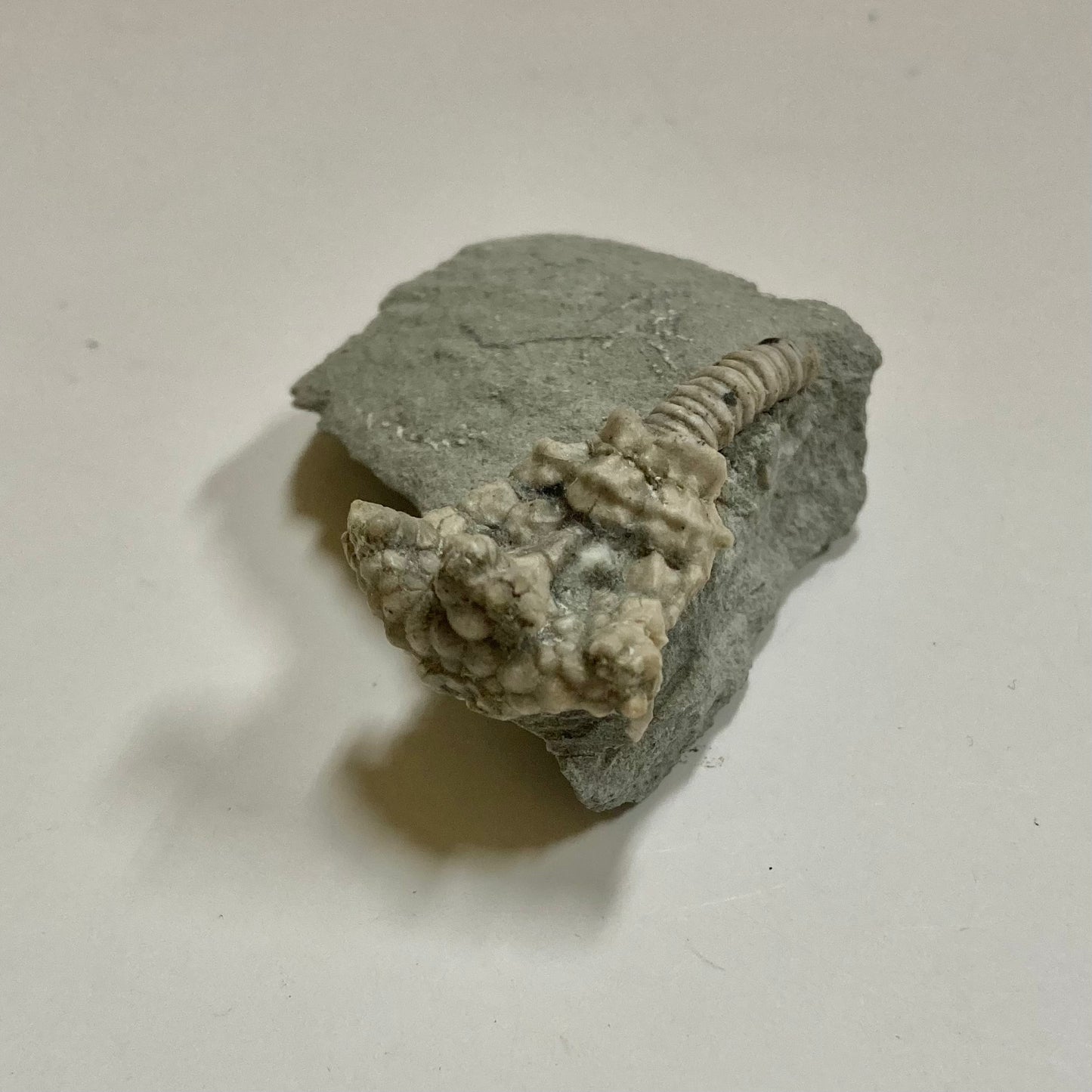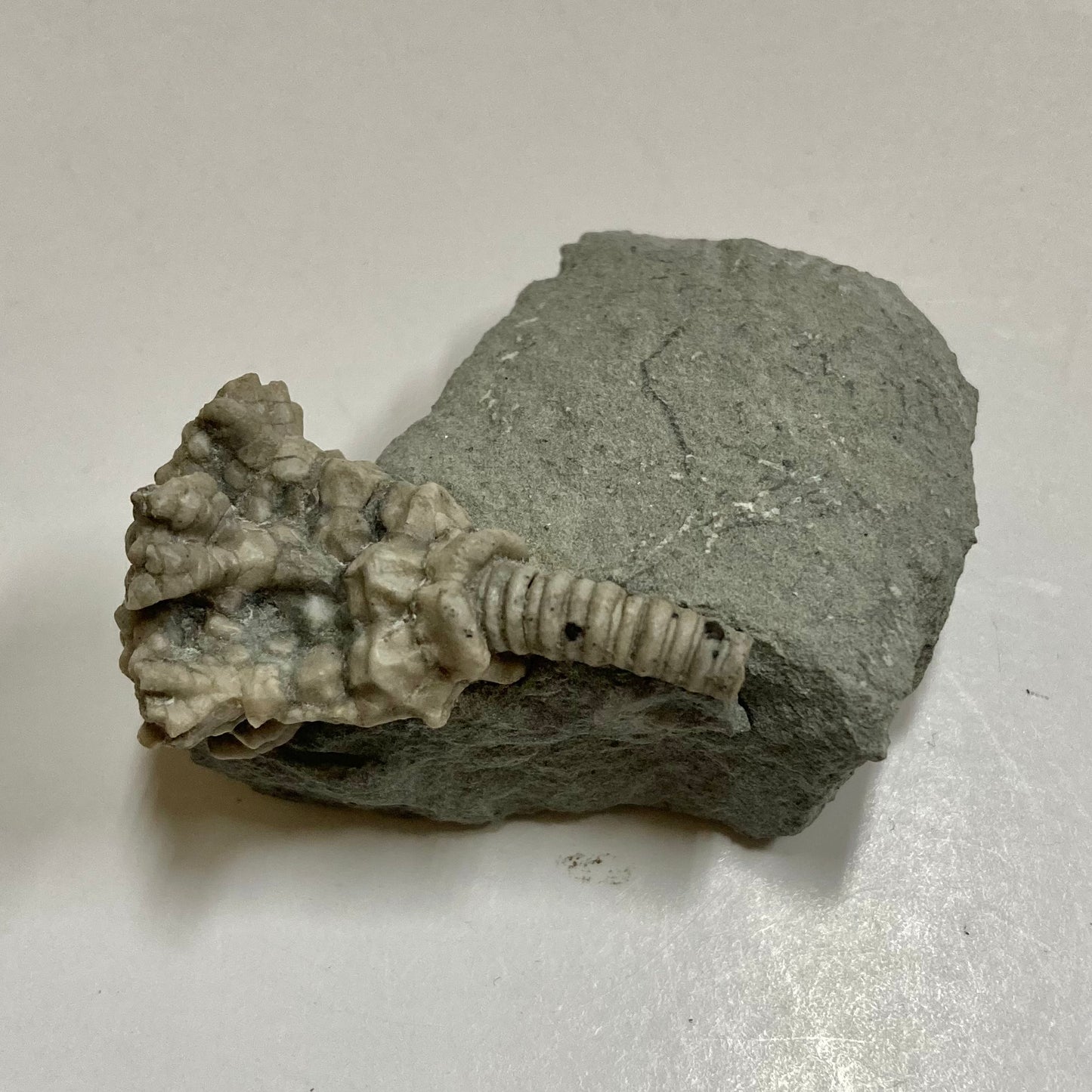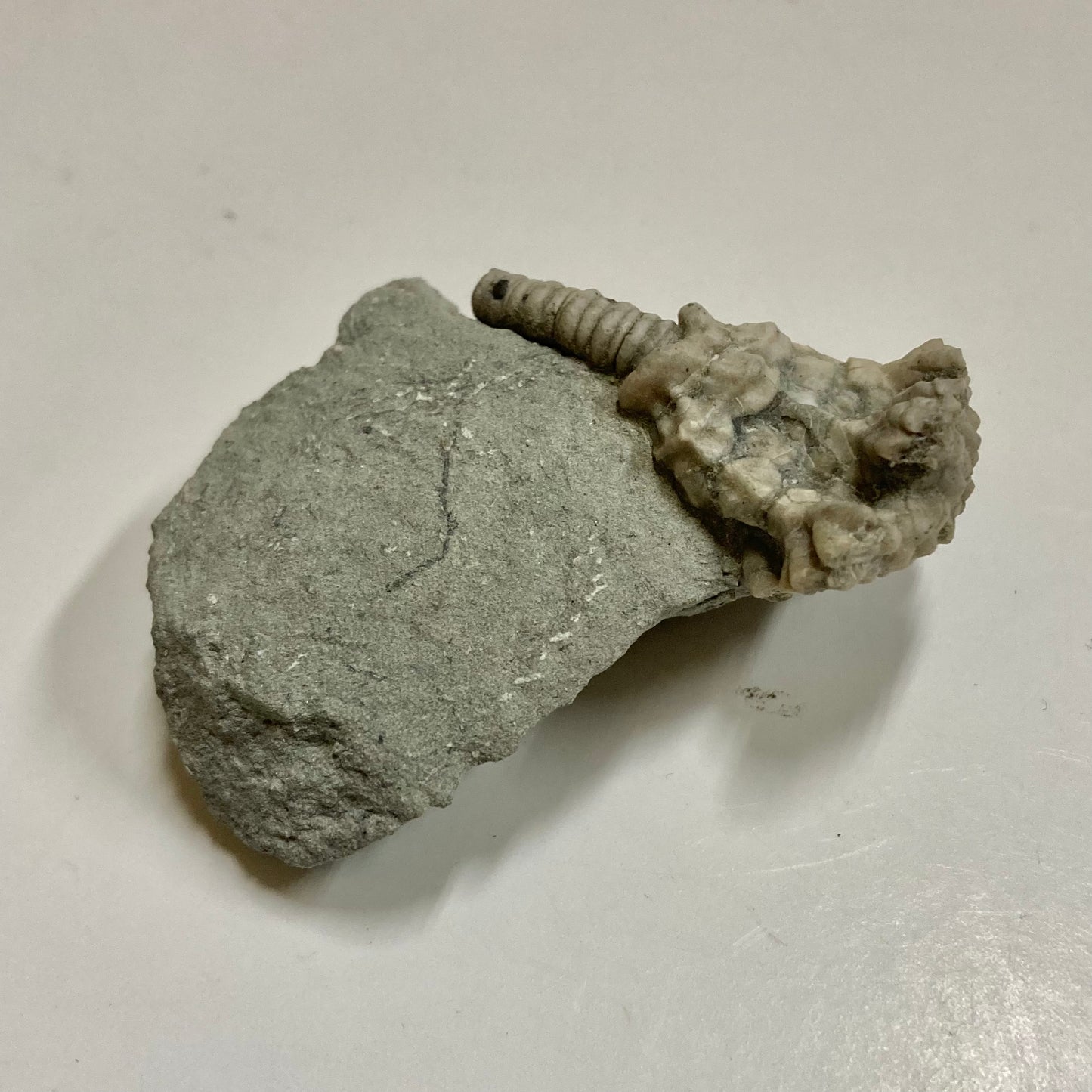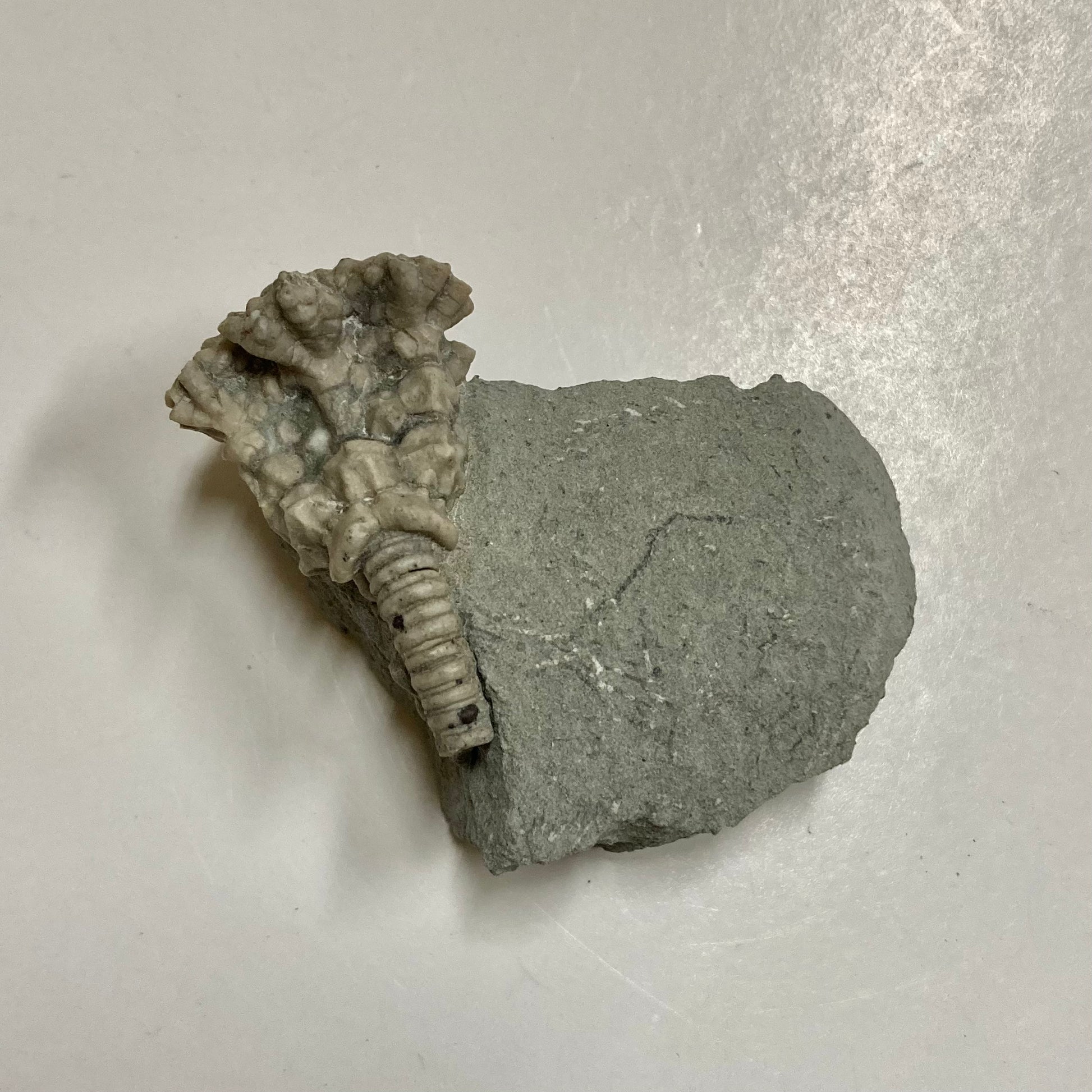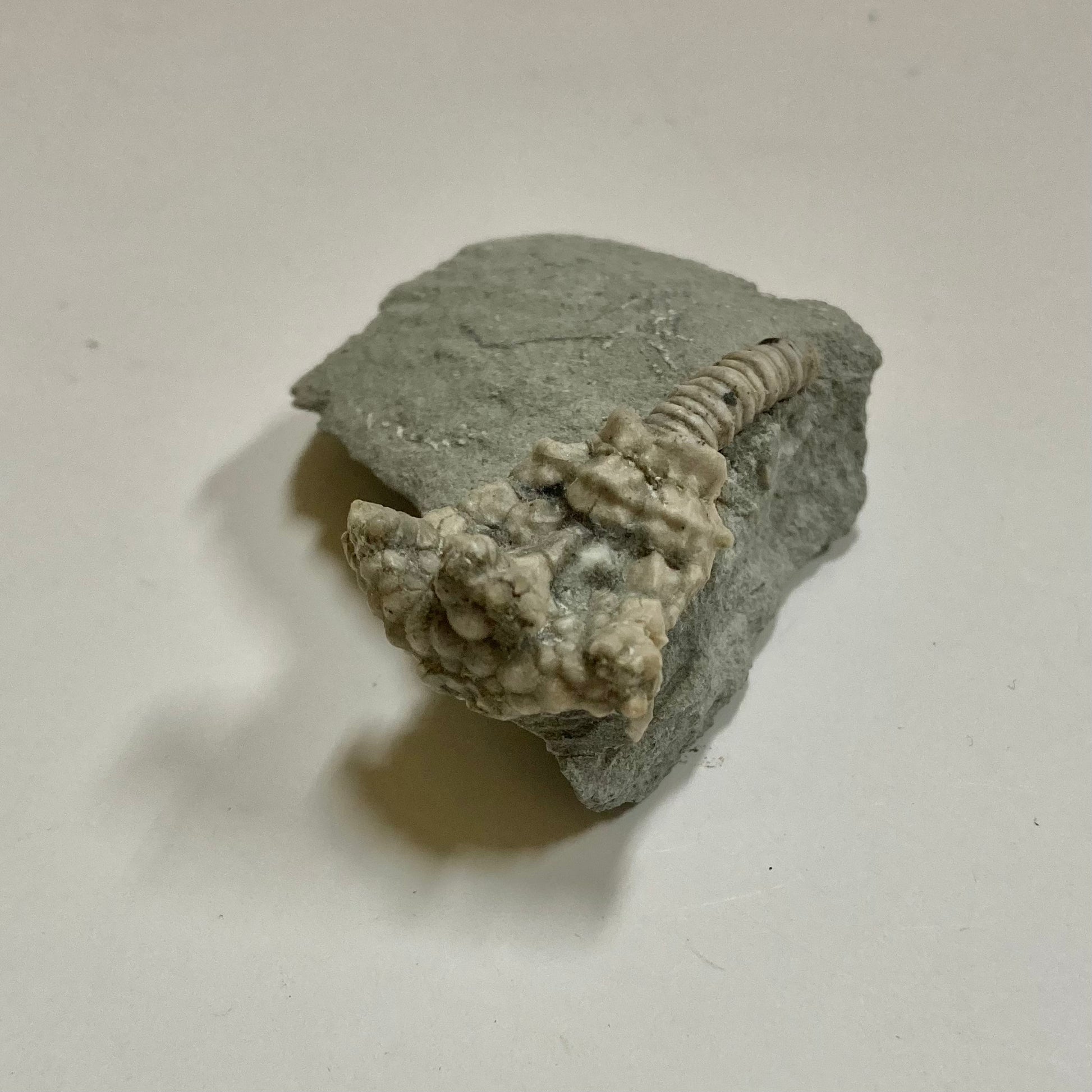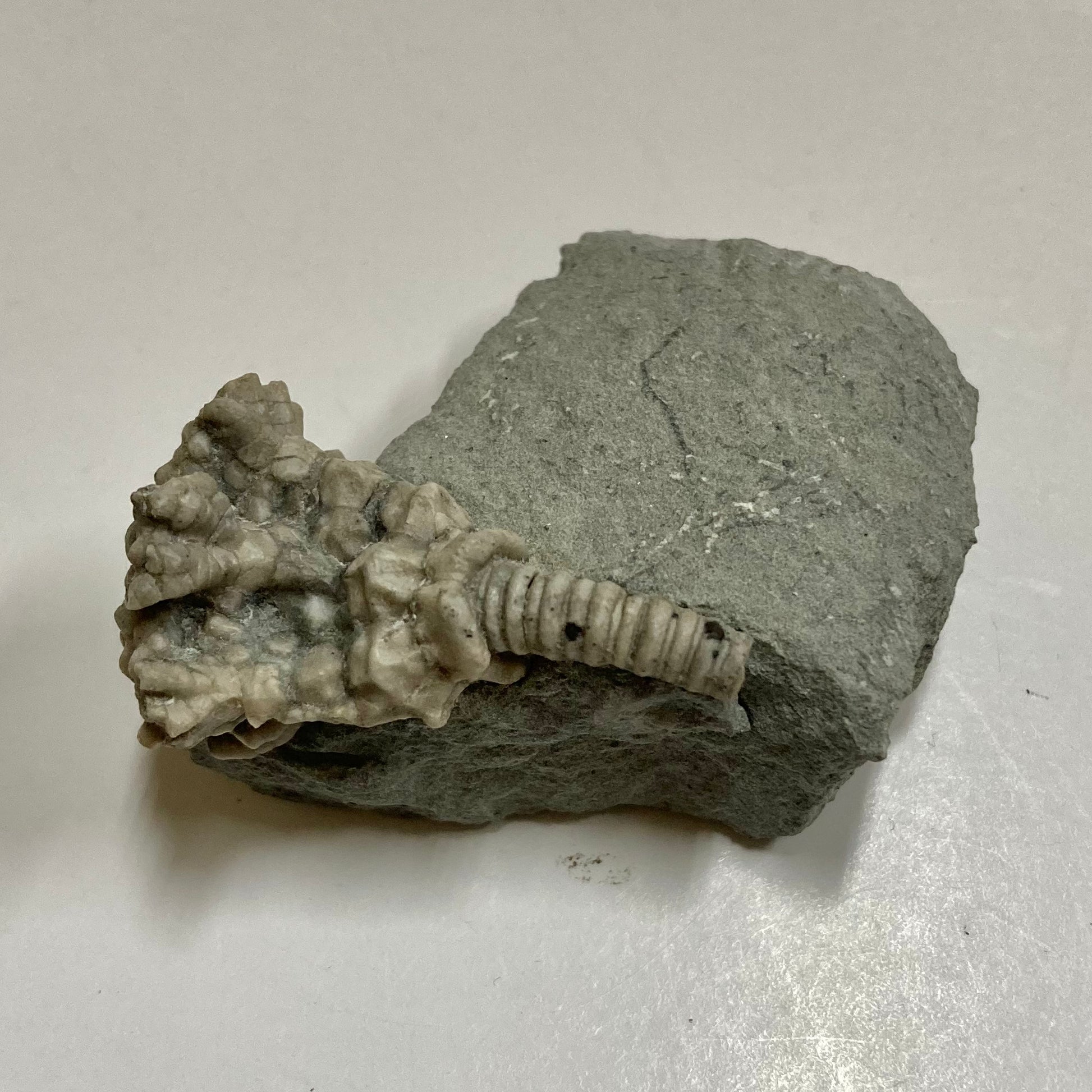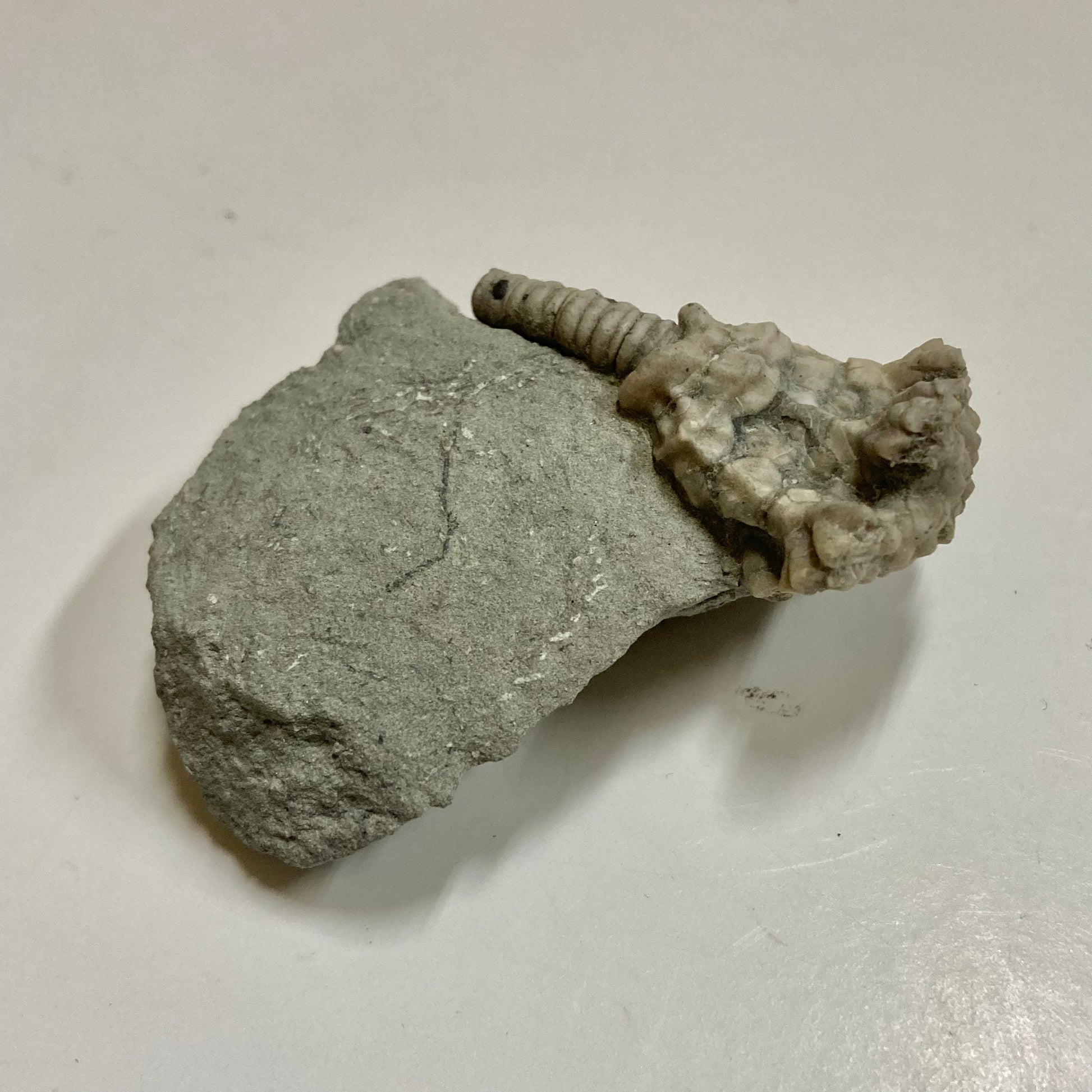Past & Present Science and Nature Store
Crinoid - Actinocrinites gibsoni
Crinoid - Actinocrinites gibsoni
Couldn't load pickup availability
Actinocrinites gibsoni crinoids of the world famous Edwardsville Formation date back to the Mississippian Period (320 million years ago). This species can also be found in Australia, China, Europe and the United States.
This beautiful specimen has its arms, calyx and part of the column preserved.
Crinoids are referred to as "sea lilies" because of their flora-like appearance, but are actually an animal most closely related to starfish, sea urchins and brittle stars.
Like other members of their phylum, crinoids have tube feet, a water vascular system, radial symmetry and appendages in multiples of five. They have a segmented stem, a calyx where the body is and digestion happen, and the arms where they filter food from the environment.
The earliest known crinoids appeared over 480 million years ago and there are still species alive today. Most species attached themselves to the sea floor, but some are known to have been free-swimming.
Type: Crinoid
Species: Actinocrinites gibsoni
Age: Mississippian (320 million years old)
Formation: Edwardsville Formation
Locality: Montgomery County, Indiana
Size:
Weight: 1.15 oz.
Share
